In one entry Wikipedia states: “Silence is not a technique of psychoanalysis”. Hail Wikipedia, for it is not! But what is silence? What about that experience of silence that brings trepidation, when one is repeatedly rendered speechless or when one’s patient remains mute? Such moments may solidify into the feeling of helplessness and incompetence. But they can make us free instead; free to focus attention on the qualities of the moment and perhaps to think of understanding the dynamics in the way different than just with reference to the concepts of identification or resistances, as important as they oftentimes are. But the question is: can one find another way of looking at silence? Perhaps more than just something to be rid of, in one way or another? As much as we can rid ourselves of the terrorizing compulsion to under-stand, can we open the space of discovery for more subtle communications from the depth of the field. In Sandplay for instance, silence regains that dimension: sacred, containing, mysterious and unknown. it is worthwhile to play with an idea of silence as the foundation of the analytic endeavor.
Silent space, borderline by nature, is an area of what is not only unknown but also chaotic and not yet differentiated. It belongs then to the realm of the earliest stages of creation. Psychologically speaking, it is a space of the psychotic sectors of the psyche.
Silence is on the other side of communication. It is like the dark side of the moon. It begins with no words. But is it really a communication or non-communication? Can silence be an interpersonally shared phenomenon or does it inevitably push us into a “polar privacy”? Analysis is more than just two people sharing one space. The space is engaging people for the sake of transformation. Among many polarities, there is also that of coniunctio and separatio. At times silence is unifying, at times it brings about the pain of separation and desolation.
Silence has many aspects and can be looked at in many ways. Some are specific and functional, like the meaning of patient’s silence or the function of analyst’s silent listening. Silence can be thus analyzed. Such analyses are to be found in psychoanalytic writing. It is not quite that kind of silence though that I am concerned with. I mean silence as phenomenon in its own and not as the function of anything. I recall Harry Wilmer who wrote that we cannot create silence. I agree. We only create noise which can be more or less meaningful. I think that there is actually no need to create silence, because it is eternal. In that sense, it is not only the essential part of the process but also the foundation of it. The crux of an attitude is then how not to foreclose silence, so that the process can unfold. The goal then becomes to withstand the attack of noise and wait patiently through the stream of conversations until something else is emerging. Silence is inevitably connected with waiting. In the basic sense of silence as it is present in the analytic field, mind encounters problems such as:
- What really is silence and how can it be comprehended?
- A paradox of silence, i.e. how does one put it into words?
- Are there symbols of silence and where it can be located in the symbolic space?
- What is the function of silence with reference to the analytic process?
Space could be one synonym of silence, even though for something non-dimensional any spatial metaphor hardly fits. I don’t think that we can really grasp the nature of silence symbolically. Nor can we really speak about silence as such. Both space and silence as such are empty. They are like Kōans. They are defined by what they are not. In a sense, silence is even emptier than space. Definitions of silence are negative, just like apophatic descriptions of God. As Wilmer aptly pointed out, we cannot imagine silence, since imagining presupposes an image. There can be no image for nothing. It is the kind of no-thing however, without which no thing could be. This seems to be a basic paradox of silence. There is no easy way to define it positively in our Western culture. It is somewhat different in the East. There space and emptiness are cultivated. For instance, Japanese have a concept of MA.
 According to ideogram, MA means “something important between” – a reference to empty spaces and gaps. And, as Wilmer noticed, nowadays we have become the species of gap-fillers. Things, words, lights – we are the children and grandchildren of en-lightment. And as psychological beings, we are light-directed entities. But nowadays, the world seems to be gradually more and more light-driven. We have become light-polluted. Can we really still experience the weight of the alchemist’s words: when you see your matter turning black, rejoice!?
According to ideogram, MA means “something important between” – a reference to empty spaces and gaps. And, as Wilmer noticed, nowadays we have become the species of gap-fillers. Things, words, lights – we are the children and grandchildren of en-lightment. And as psychological beings, we are light-directed entities. But nowadays, the world seems to be gradually more and more light-driven. We have become light-polluted. Can we really still experience the weight of the alchemist’s words: when you see your matter turning black, rejoice!?
Silence is so interesting because of its incomprehensibility. Encountered in clinical situation it can be as much welcomed as become a challenge, to say the least. Silence can have many facets: it can be connecting or dividing, desired or dreaded, loved or hated. Sometimes it is important to hold it. Sometimes it is crucial to break its spell, since at times it is experienced as a spell. While sitting in front of another person during the analytic hour, it presents as a fascinating phenomenon.
At times the desire to break silence is on both sides, since it can become truly unbearable. It is then felt as something undesirable, something to overcome; an extreme situation. Although it can become like that, I don’t think that even then it is not necessarily meaningless. Silence can also lead to the numinous. It can allow for the kind of experience which is by definition awful[1], that is something par excellence archetypal.
Is silence an archetype then? I think not. It is hard for me to imagine the archetype of silence. Usually archetype is thought of as something approachable in language, be it the language of words or images. The archetype per se is not to be known and one can get to know it through symbols and images which can be of physical or psychological nature. I think it is somewhat different with silence. I wonder whether we can speak about the symbols of silence at all. It may be more safe to speak of its references.
Perhaps the archetypal nature of silence is discernible in its perpetuity. It is something to be at the beginning and at the end as well. Things start in silence and they end in silence. To begin with life itself, through various meaningful life experiences, including analytic process. It precedes the first scream and follows the last breath. It is present before the patient enters the room and in the wake of his or her departure. Silence is structurally inevitable in what we do and what happens to us. But our world is also filled with noise. So even though, in one way or another, we yearn for silence, sometimes we don’t know what to do with it. Silence can also turn its dreadful face towards us and make us feel insecure. It can make us want to escape and to avoid. But if it were not for silence, we could not communicate with one another. The stream of words would not have a necessary structure as a meaningful act of communication. On the other hand, words can also be as ferocious as silence, when one can be talked at with an endless flow of words. This can become as unbearable as so-called “silent treatment”. Those two can actually make the polar opposites. Silence, as well as noise, can get positive or negative value. However, phenomenologically speaking, silence just is. It is a phenomenon, like a thunder is a phenomenon of the storm[2].
There are different sorts of symbols and many reference points. Most are complex but there are also basic ones and they are worth mentioning too. Such basic references are to be found in encyclopedias. Those are the images of silence as they appear in linguistics and sign languages:
· ― |
They are useful to reflect on. As basic as they are, they say something basic about the nature of silence. They describe its different aspects, depending on what quality predominates, and they are referring us further. The first one is a dot – the point. It refers to something very primal: the foundation of existence, number 1, the seed of the self, and so on. It points at ever-present quality of silence. The second one is a horizontal line. It represents linking and thus connection, togetherness. It is like the elementary image of the bridge and it leads further to the idea of transcendent function. The third one is a vertical line. It may represent division, separation, both in positive and negative sense. In a positive sense, it refers to the differentiation that is a prerequisite for further integration. For instance: it may refer to the division of a cell and thus to the idea of growth. In a negative sense, it refers to the states of disconnectedness implying lack of integration, splitting, aloneness, seclusion.
All three can be connected in order to make a certain wholeness. They are all required in the process of creation and integration – from primal to final unity. When pictured together they make an image of the cross with a dot inside. This is one of the symbols of dynamic wholeness.
There is one image among the archetypal figures associated with silence. This is a gesture of putting a finger upon the lips. The message is to not to speak – to remain silent. Different figures are depicted this way and such an image can be found in different kinds of mythologies. One of the stories is the Hermetic tradition of alchemy, in which Hermes is associated with silence. Psychologically speaking, he is associated with the analytic process in general. Therefore it makes sense to start an exploration of silence, as pertaining to the healing activity of psyche, with him.
Hermes is a messenger-god associated with language and communication. Since his nature is essentially duplex and paradoxical, he can be associated both with speech and with silence. In other words, he communicates in both ways. As Michael Whan pointed out, “It may be said that Hermes is in every silence in so far as silence is a communication”[3]. Whan writes of Hermetic silence and he makes references to alchemical process. The Hermes of alchemy is depicted with a finger raised to his lips.
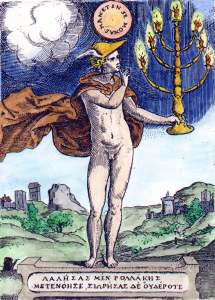 In such Hermetic silence there is a quality of something basic and fundamental: “even if a silence belongs to the epiphany of another god or goddess, it is the work of Hermes, the go-between god, which enables it to become an intelligible communication”[4].
In such Hermetic silence there is a quality of something basic and fundamental: “even if a silence belongs to the epiphany of another god or goddess, it is the work of Hermes, the go-between god, which enables it to become an intelligible communication”[4].
Whan characterized that Hermetic space in the analytic vessel as having an essentially borderline quality. Consequently it is ambiguous. Hermes, because of his duplex nature, represents both: speech and silence, light and darkness, knowledge and the unknown, togetherness and solitude. Whan used Jung’s notion of twilight reflection to describe the mood of the reverie that Hermes brings into the analytic hour. He stated that in psychiatry, such mood is usually associated with “a clouding of consciousness, outbursts of violent rage, and fugue states as found in epilepsy, psychosis and hysteria”.[5] But these twilight moods “also have their healing side”[6]. This is connected with the notion of silent incubation as known from the mythology of Asclepius. In them, the healing process is associated with night and sleeping. And the dreaming is, as Wilmer pointed out, by and large a silent activity.
When silence tends to be prolonged during the analytic hour this may mean that Hermes is being present. He is as slow as low is the heat of the alchemical vessel. It cannot be either too hot or too cold if the lapis is to be created. Together with prolonged and enduring silences, he oftentimes brings drowsiness or somnolence. The sleepiness in the analyst’s office points at the large amount of unconscious content. Often it has been taken as a resistance against painful and unwelcomed material. But somnolence can also mean that something is, as it were, coming up to the surface. Could the idea of resistance then be seen as analyst’s own resistance against patient’s need: an unconscious need to be followed into that uncomfortable cauldron? Could some persistence on verbal interpretations then be understood as a way of deterring the anxiety?
In W. H. Hodgson’s novel “The House on the Borderland” the protagonist enters in his vision a kind of no-man’s land. This vision has a numinous quality. The hero describes a world sunken in silence. Prior to recognition of any further details and inhabitants of that land, he enters the endless plain, which is described as “the plain of Silence”. There is no sense of boundaries or time in there. He says: “Presently, I landed, and stood, surrounded by a great waste of loneliness. The place was lit with a gloomy twilight that gave an impression of indescribable desolation.”[7]
The borderline quality of Hermetic silence has important ramification, because it points to the whole area of fringes in the analytic discourse. In other words, what is taking place around the conversation becomes the focal point. This is an area of what is alluded to, put in monosyllables or communicated nonverbally. This is the place of internal reverie and images, whose formation process can only be destroyed by some premature words. As Jung points out:
“What takes place between light and darkness…has a share in both sides and can be judged just as well from the left as from the right, without our becoming any the wiser…it also brings a re-experiencing…of that twilight which we can learn to understand only through inoffensive empathy, but which too much clarity only dispels”[8].
Attention to silence provides a particular opportunity for attending the transference and countertransference area of the relationship, an area in which complexes are coming up to the surface. They stir up the heat so that through re-experiencing the transformation might take place. There is no experience of the complex without lowering of the energy of consciousness. When it happens, the participants enter that twilight space. Saying too much and too soon can bring the attention back to the ego level and foreclose the deeper transformation.
Silent space, borderline by nature, is an area of what is not only unknown but also chaotic and not yet differentiated. It belongs then to the realm of the earliest stages of creation. Psychologically speaking, it is a space of the psychotic sectors of the psyche. It can provoke intensely upsetting emotions such as awe, fear or rage, so that one may want to defend against it. But it can also extend beyond ego, enabling an emergence of the deeper layers of psyche towards an experience of the self.
I think that even when silence isn’t a communication it doesn’t have to shut off the potential for it. The non-hermetic aspect of silence can be understood from the different archetypal perspective, which seems to be even more primal. In order to elucidate this further, I want to refer to the myths of creation. It seems to me that most of such myths don’t say much about the initial state, the state before the creation. If they do, they often allude to it vaguely. It is understandable, since in a certain way that state “before creation” is incomprehensible, unthinkable and so unnamable. Harry Wilmer, in his metaphor, refers to the notion of a vacuum. He wrote that “vacuum can be used as a model for the conventional definition of silence: ‘Space devoid of sound’”[9], like vacuum which is a space without matter. He says that “it would approximate an artificially bounded silent space”[10].
In many myths of creation, world is being created with sound or with word, it is being uttered. What was then before the sound? In Greek mythology there was Chaos, which is defined as “vast emptiness” from which the first goddess – Gaia – came into being. Among the myths of Mesopotamia, Sumerian Pantheon of gods lists Nammu (“the Primal Waters”), the first goddess who created the world. In belonging to the same group Chaldean myth of creation there is reference to the period before she came into being, and that is also Chaos.
In Hindu Vedic tradition, there is Vac (“speech”) as something that preexisted in the beginning, before the creation, and which initiated the cosmogonic process. In Devi Sukta hymn, found in Rig-Veda, she presents herself: “I am giving birth to Father on the top of the world. My beginning is in the Waters, in the ocean”[11]. In Atharva-Veda it is said that she has been born in the abyss, and from there she raised onto the top of the Cosmos. That waters and abyss are symbols of the primal potency, chaos from whence the cosmos has emerged.
In Egyptian myths of creation one can find striking similarity to the process of speaking out of the world, well known from Judeo-Christian tradition of the Holy Bible. The world in those myths is also said to have been created with power of words and ex nihilo. There is an implicit element of “nothingness” before the beginning. Inasmuch as there was Chaos before Cosmos which came into being with sound, we can put forward an image of primordial silence before the sound. In the Book of Genesis, “in the beginning God created the Heaven and the Earth”. But we may ask: what was before? In the Gospel according to St. John, we read that the Word was in the beginning. One may wonder, what was before the Word?
It seems that there was silence before the very first act of creation. The endless sea of non-differentiation was silent. Although we cannot find it directly in the orthodox writing, there are apocryphal stories of creation that refer to silence more explicitly. In the Valentinian Gnostic myth there is a being by the name of Sige. The Greek word Σιγή means “silence”. She is the one that was before the creation. The primordial female power, as though “the grandmother” of all the things. She is the mother of Sophia who is also known as Hohkma, Sapientia, Holy Spirit, Wisdom, which according to Gnostics was The Mother-Of-All. Sige is the Silence at the beginning, also called The Great Silence, the Void, the eternal Silence that has been there before anything else was, and will be when everything is over. She is being referred to as the space around the stars. In that sense the silence surrounds everything and everything is immersed in it.
 Her Roman counterpart is Angerona. While Sige was described as the silence at the beginning, Angerona can be connected with the silence at the end. According to one of her functions, she was the guardian of the secret name of the city of Rome. The secret name is not to be spoken. The idea that both those who don’t know and those who do know don’t speak, connects it with the theme of initiation. After having been granted the access to the experience of the mystery, the initiate was not allowed to speak about it. He was bound by a vow of silence. And so, when leaving the temple, he would pass the statue of Angerona with her finger on the lips as a reminder of the vow.
Her Roman counterpart is Angerona. While Sige was described as the silence at the beginning, Angerona can be connected with the silence at the end. According to one of her functions, she was the guardian of the secret name of the city of Rome. The secret name is not to be spoken. The idea that both those who don’t know and those who do know don’t speak, connects it with the theme of initiation. After having been granted the access to the experience of the mystery, the initiate was not allowed to speak about it. He was bound by a vow of silence. And so, when leaving the temple, he would pass the statue of Angerona with her finger on the lips as a reminder of the vow.
 In Roman mythology, the male counterpart of Angerona is Harpocrates. He was a descendant of Egyptian Heru-p-khart, Horus-the-Younger. He was depicted in two ways: as a boy suckling his finger or putting his finger upon the lips. As scholars nowadays believe, the latter image has been falsely identified by the later Greek and Roman poets with silence. It is thought that the hieroglyph originally meant “the child”. Even though historically this might have been a false identification, both of those images seem to point to the meaning of this figure. Could they be seen as a reference to the process of coming into being: a baby self-contained, as it were, in silent reverie? This image reminded me of one of my child patients. That little boy, when attempting particularly meaningful activities and seeing me trying to say something, would put his finger upon his lips and say “hush” so he could play in silence. At such times he would sometimes also turn the light off.
In Roman mythology, the male counterpart of Angerona is Harpocrates. He was a descendant of Egyptian Heru-p-khart, Horus-the-Younger. He was depicted in two ways: as a boy suckling his finger or putting his finger upon the lips. As scholars nowadays believe, the latter image has been falsely identified by the later Greek and Roman poets with silence. It is thought that the hieroglyph originally meant “the child”. Even though historically this might have been a false identification, both of those images seem to point to the meaning of this figure. Could they be seen as a reference to the process of coming into being: a baby self-contained, as it were, in silent reverie? This image reminded me of one of my child patients. That little boy, when attempting particularly meaningful activities and seeing me trying to say something, would put his finger upon his lips and say “hush” so he could play in silence. At such times he would sometimes also turn the light off.
The process of analysis can be looked at from the perspective of initiation.[12] It is the initiation into the mysteries of psyche, the process of coming into being, the initiation into life. There is silence both at the beginning and at the end of that process. At the beginning there is a silence of ignorance and non-differentiation. At the end there is a silence of knowledge.
I think that when we experience silence in the clinical setting, we can draw from those myths and symbols. Regardless of how it emerges, at the beginning silence is always in the office. I believe that at times it would be essential not to intervene. It is important to recognize the positive value of something that is and can be there throughout the whole process. Imaginatively speaking, it is needed like vacuum that can suck-in some air so that the analytic pair could breathe. Silence in the room can be the presence of Sige, the primal Grandmother of whatever may need to come into being. In that sense it is like the primary container. To use the alchemical metaphor, the analytic pair is in the creation of the container, in and through the relationship. Both participate in the emergence of what is an interactive field. Perhaps silence is the container that holds that field itself.
Silence can show up in the process at different times. I think that it can mean that something new is about to happen. Sometimes Sige reminds about herself. As Hermes can announce his presence with sleepiness, so Sige can mark hers with stillness. I believe it may be crucial to listen to this silence without interrupting. At first there may be nothing there and then it is a difficult position, for that stillness is by no means just the lack of movement. In the language of alchemy it relates to nigredo. It is a state which T.S. Eliot described with the clarity and precision quite exclusive for poetry:
“I said to my soul. Be still, and let the dark come upon you
Which shall be the darkness of God. As, in a theatre,
The lights are extinguished, for the scene to be changed
With a hollow rumble of wings, with a movement of darkness on darkness.
I said to my soul, be still, and wait without hope
For hope would be hope for the wrong thing; wait without love
For love would be love of the wrong thing; there is yet faith
But the faith and the love and the hope are all in waiting.
Wait without thought, for you are not ready for thought:
So the darkness shall be the light, and the stillness the dancing.”[13]
Gradually something may fill-in the vacuum. A thought, a feeling, or an image can appear. As Schwartz-Salant pointed out, analysis is not a dream that is being mutually dreamed but a process in which both participants are immersed in and are dreamed by. He speaks of the value of working with the vision in the borderline sectors and he stresses the containing quality of it, even when not spoken out[14].
In my experience it has been helpful to orient myself in silence by use of intuition. Perhaps among all the functions described by Jung, intuition works best in the dark. I have found it helpful in my attempts to understand the experience of that borderline area of psyche. Following intuition can be tricky. It requires carefulness. In the same time, it is important to have a certain amount of trust in the process and in the goal. To refer once again to Michael Whan: “waiting and patience are of the essence, the pace cannot be forced, for as Jung puts it, the therapist is a servant of the process”.[15]
Author: Tomasz J. Jasinski
Notes:
[1] According to Merriam-Webster dictionary, awful means:
- Inspiring awe,
- Filled with awe,
- Extremely disagreeable or objectionable,
- Exceedingly great – used as intensive.
[2] According to Aristotle; personal notes from the seminar by Renos Papadopoulos.
[3] Whan M., „Hermetic Silence in Psychotherapy”, p. 73.
[4] Ibidem.
[5] Whan M., p. 75.
[6] Ibidem.
[7] Hodgson, W.H. (1996), The House on The Borderland, Running Press, p. 11.
[8] After: Whan M., op. cit., p. 75.
[9] Wilmer, H (2000), Quest for Silence, Daimon Verlag: Switzerland, p. 56.
[10] Ibidem.
[11] „Werbalne mity kosmogoniczne. Próba analizy porównawczej”, in: Zeszyty Filozoficzne (10-11), Poznań, Poland.
[12] Ref: Henderson J. L. (2005), Thresholds of Initiation, Chiron Publications: Willmette, Illinois, USA.
[13] Eliot T.S. (1971), Four Quarters, A Harvest Book: New York, p. 27-28.
[14] Source: San Francisco Jung Institute Library, from the recorded lecture given by Nathan Schwartz-Salant, entitled “Transference and Countertransference”.
[15] Whan M., op. cit., p. 78.
 Tomasz J. Jasinski – clinical psychologist, Jungian analyst (IAAP IM)
Tomasz J. Jasinski – clinical psychologist, Jungian analyst (IAAP IM)
Tomasz has a double academic background. He graduated in clinical psychology in the Warsaw Univerysity and he is also a graduate of the Institute of Philosophy a the Jagiellonian University in Cracow. He studied psychology at the California Institute of Integral Studies in San Francisco and at the Institute of Transpersonal Psychology in Palo Alto, California, United States. During his studies he worked, among the other clinics, in the James Goodrich Whitney Clinic at the C. G. Jung Institute in San Francisco, California.
He is a certified Jungian analyst – an Individual Member of International Association for Analytical Psychology. He is also a founder member and current president of Polish Association for Jungian Analysis (PAJA). In PAJA he participates in the work of its Training Committee and is a teacher at the first stage of its training.
He is interested in the meaning of silence for analytical work and the transcultural aspects of analytical training.
Tags: Hermes, Jungian psychoanalysis, mythology, relationship, silence


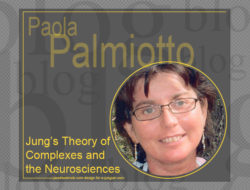
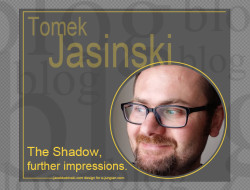
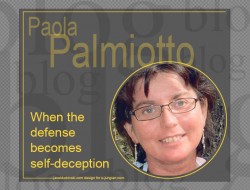
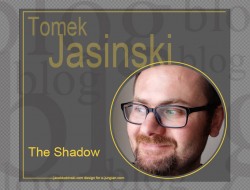
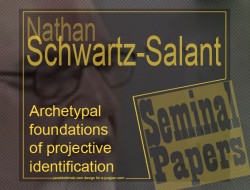

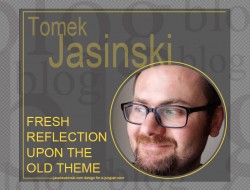

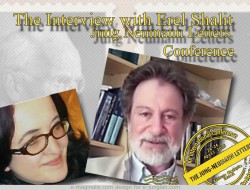


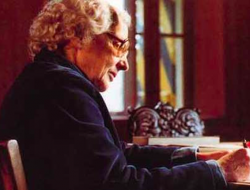
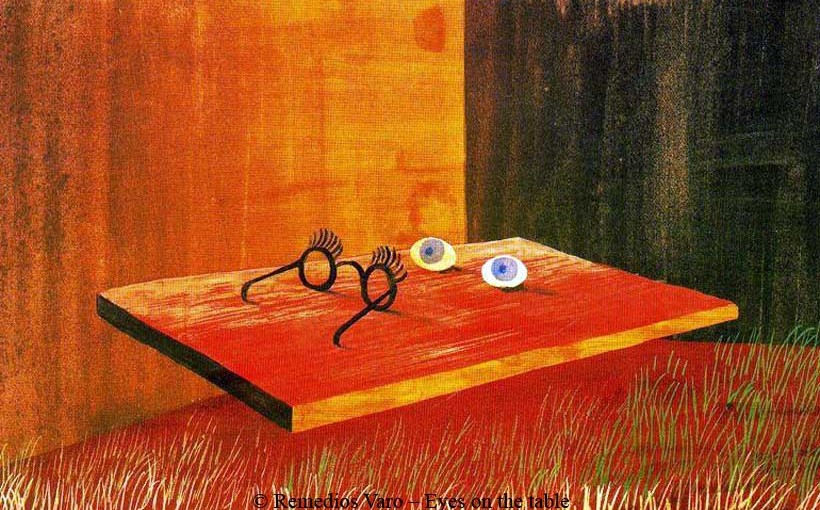









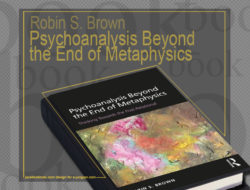

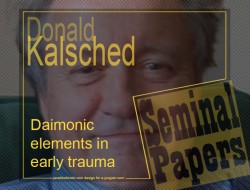
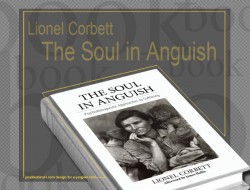
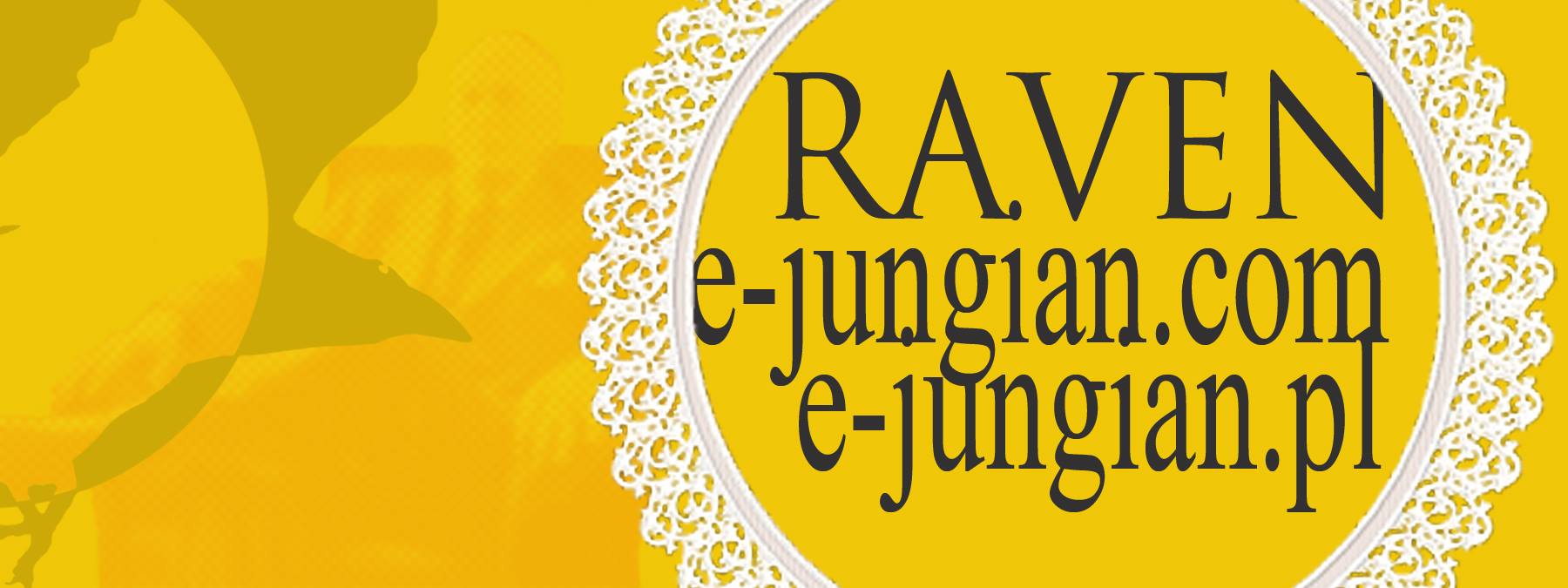



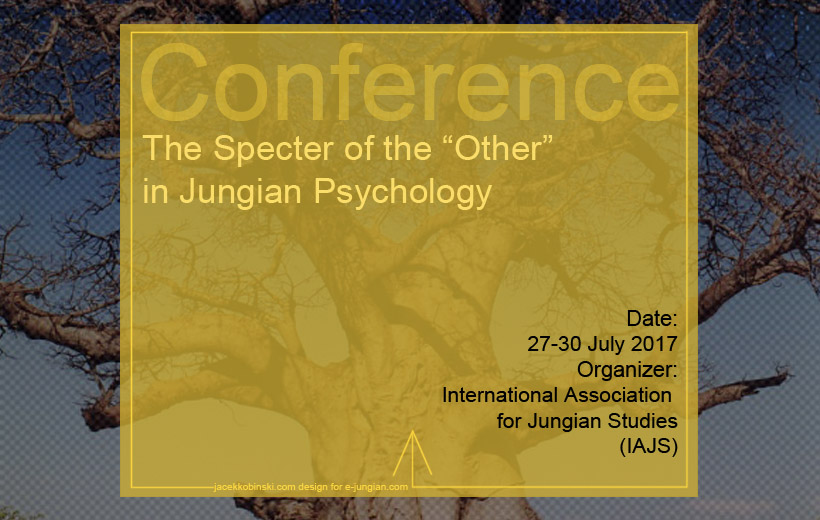
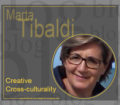
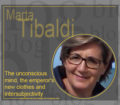
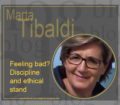
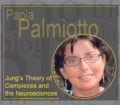

[…] In one entry Wikipedia states: “Silence is not a technique of psychoanalysis”. Hail Wikipedia, for it is not! But what is silence? What about that experience of silence that brings trepidation, when one is repeatedly rendered speechless or when one’s patient remains mute? Such moments may solidify into the feeling of helplessness and incompetence. But … […]